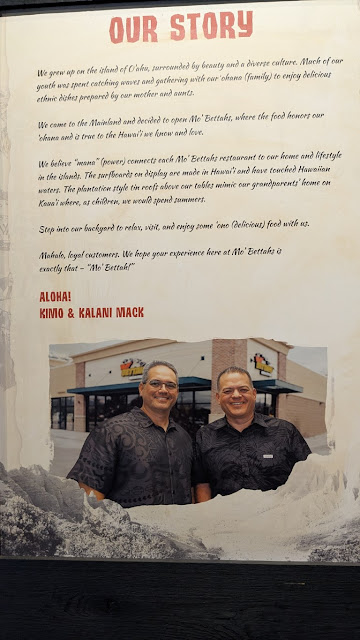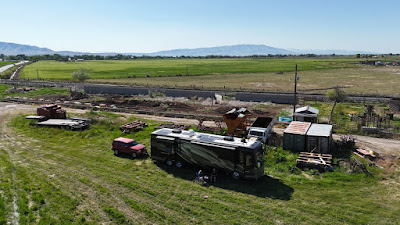As I indicated in the previous post, we drove from Kodachrome up to Spanish Fork, Utah, with the plan for Carl to seek medical assistance for abdominal pain. We decided to drive to Intermountain Health Utah Valley Hospital in Provo.
.jpg) |
| We found the hospital with no problem, and there was parking relatively near the emergency entrance. |
The ER reception folks got Carl checked in quickly, and we were taken back to the area where the ER rooms were -- it was a large emergency room with private areas for each patient. Carl was seen pretty quickly by a PA who was definitely concerned by the degree of tenderness that Carl exhibited when she pressed on his abdomen. She ordered a urine test, blood work, and a CT scan.
.jpg) |
| The urine test and blood work could be collected right away. They needed the results from one of the blood tests before doing the CT scan to ensure he would be able to eliminate the dye that would be used during the scan, so the CT scan needed to wait for an hour or so. |
Before the CT scan was done, the PA came in to let us know that there was bacteria present in the urine sample, so something was going on there. She still wanted to do the CT scan. After about 2 hours, they did the CT scan, and soon after that, the PA was back with the diagnosis:
.jpg) |
| When she first said the name of it, the second word sounded a lot like "appendicitis" but it isn't related to the appendix at all. |
Information from Wikipedia (https://en.wikipedia.org/wiki/Epiploic_appendagitis):
Epiploic appendagitis (EA) is an uncommon, benign, self-limiting inflammatory process of the epiploic appendices. Other, older terms for the process include appendicitis epiploica and appendagitis, but these terms are used less now in order to avoid confusion with acute appendicitis.
Epiploic appendices are small, fat-filled sacs or finger-like projections along the surface of the upper and lower colon and rectum. They may become acutely inflamed as a result of torsion (twisting) or venous thrombosis. The inflammation causes pain, often described as sharp or stabbing, located on the left, right, or central regions of the abdomen. There is sometimes nausea and vomiting. The symptoms may mimic those of acute appendicitis, diverticulitis, or cholecystitis.
The PA described that the fat-filled projection along the surface of the colon somehow got twisted which cut off the blood supply to the projection -- this causes the fat sac to die, which produces pain. There is no treatment for it other than anti-inflamatory (ibuprofen) and/or pain medication (same, ibuprofen). It may take up to two weeks to resolve.
They did prescribe an antibiotic for the bacterial infection (UTI) which is wholly unrelated to the epiploic appendagitis and for which Carl has had no symptoms. There were no diet restrictions and they sent us off, though asking us to stay closer to "populated areas" for the two week duration of the antibiotic, just in case there would be any side-effect of the antibiotic.
We were so grateful to have a diagnosis and that it was not something that would require surgery or any significant longterm issue!
.jpg)
.jpg)
.jpg)
.jpg)
.jpg)
.jpg)
.jpg)
.jpg)
.jpg)
.jpg)
.jpg)
.jpg)
.jpg)
.jpg)

.jpg)
.jpg)
.jpg)
.jpg)


.jpg)



.jpg)
.jpg)
.jpg)
.jpg)
.jpg)
.JPG)
.JPG)
.JPG)
.JPG)
.JPG)
.jpg)
.jpg)
.jpg)
.jpg)
.jpg)

.jpg)
.jpg)
.jpg)
.jpg)
.jpg)
.jpg)
.jpg)
.jpg)


.jpg)
.jpg)
.jpg)
.jpg)
.jpg)